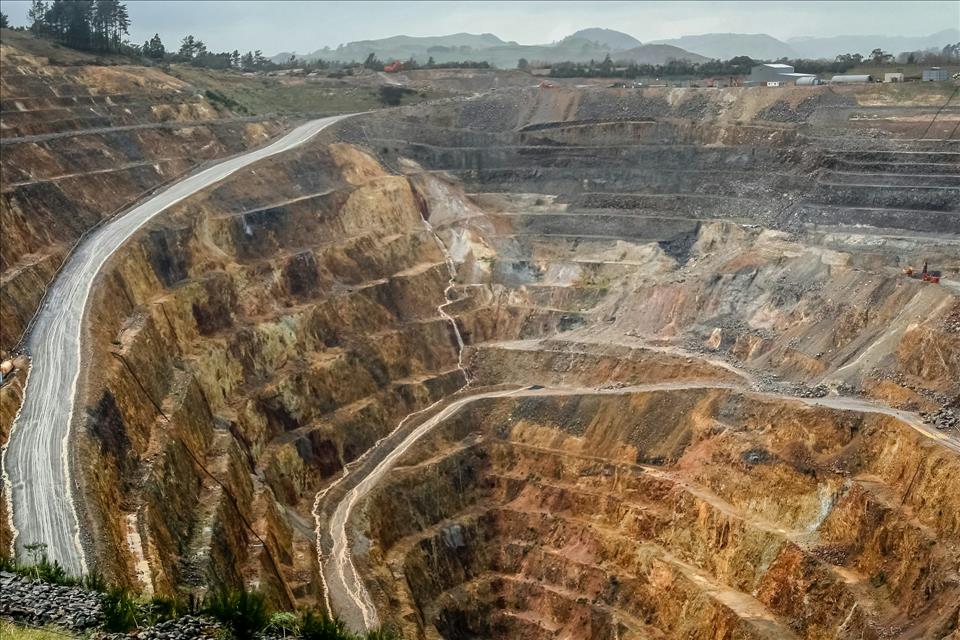
NZ's Government Wants To Kick-Start A Mining Boom But They're Unlikely To Hit Paydirt
Alongside his more colourful statements – that blind, endangered frogs might be sacrificed for exploration or mining developments – Jones has proposed amendments to the Crown Minerals Act and developed a new draft minerals strategy that is currently out for consultation.
The new strategy aims for ten significant new mining operations by 2045 and a doubling of export value (to NZ$2 billion). The strategy also calls for prioritising economic gain and regional development over environmental protections.
A list of“critical minerals” for exploration is being drafted, positioned as part of the“energy transition” made possible by green technologies. Given these bold claims, we need to be looking at what the evidence tells us is happening, and likely to happen in future.
The green transition conundrumNew Zealand's ability to contribute to the green energy transition faces serious obstacles. According to the petroleum and minerals online database , only 15 out of 51 applications for new permits for mining or exploration in 2024 (to June) are not for gold.
Aside from permitting for aggregates such as roads and concrete, the few remaining applications are broadly speculative exploration and prospecting applications. These involve a long list of minerals (including gold), most of which are not critical to any green transition.
In fact, the minerals required in the largest volumes for this green transition are still iron ore, copper, nickel and bauxite – none of which we have in Aotearoa in significant quantities.
Costs and benefitsLeaving aside arguments in favour of mining for the greater good, then, what of the claims about generating jobs, business and taxes? Here the evidence that mining contributes to significant community gains or the national coffers is weak.
Ten years ago, when a previous National government proposed expanding mining access to conservation lands, economist Geoff Bertram showed the benefits were likely to be limited .
He argued that
Bertram also noted the sector was, as a whole, not a strong employment or income generator. Gold mining was the weakest on this score.
Part of the problem lies in the known variability and volatility of mineral commodity prices. This can either mean economic projections for new mining are too optimistic, or that returns will increase anyway due to market trends.
The price of gold has gone up by 81% (in New Zealand dollar terms ) over the past five years, for example. If that continues, even current levels of gold production will double in value by 2035.
Furthermore, a mine of any kind is not an automatic panacea for a community's economic woes. Waihi – a centre for gold mining in Aotearoa New Zealand for more than a century – lies in the Hauraki district which has some of the highest measures of socioeconomic deprivation in the Waikato region.
In this context, doubling of the value of exports by 2030 means little in an industry where commodity values fluctuate dramatically, and where the returns to local and national economies are typically a small fraction of the value of any mineral extracted.
Midas in AotearoaIn 2022, to address what we saw as a disconnect between the rhetoric of the mining industry and the practices of many companies, a colleague and I proposed seven key behaviours a mining sector committed to sustainable development needs to adopt.
These included:
-
recognising limits to where they should operate
admitting rather than concealing faults accepting and respecting external regulation
promoting transparency and independent monitoring adopting cleaner production technologies and processes
embrace recycling and paying its way as a sector.
The final point is directly relevant to the current debate. We noted that while there is no“consistent line on what constitutes a 'fair' level of taxation [...] the global industry has acquired a bad reputation for its handling of tax, royalties and transfer pricing”.
There is no evidence of real corruption within New Zealand's mining sector. But as Geoff Bertram's work showed, the state capturing just 4.4% of the value of minerals extracted would not be regarded as“fair” by most people.
As we also made clear in our manifesto, society needs mining, and mining itself is not inherently or necessarily rapacious. There are responsible operators, including New Zealand's largest gold producer, OceanaGold , which has generally operated to global standards of transparency and environmental management.
But globally, risk is inherent to the sector. And risk tends to attract“cowboys”. Anyone seduced, Midas-like, by stories of huge resources and wealth under Aotearoa New Zealand's soil risks ending up as unhappy as the allegorical king.

Legal Disclaimer:
MENAFN provides the
information “as is” without warranty of any kind. We do not accept
any responsibility or liability for the accuracy, content, images,
videos, licenses, completeness, legality, or reliability of the information
contained in this article. If you have any complaints or copyright
issues related to this article, kindly contact the provider above.


















Comments
No comment